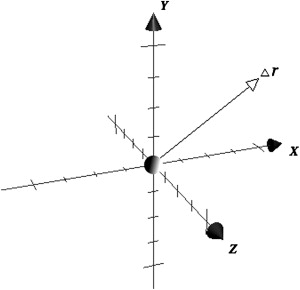With the increased conditioning, size, and speed of professional athletes and the increase in individuals engaging in sports and recreational activities, there is potential for rising numbers of traumatic brain injuries in sports. Fortunately, parallel strides in basic research technology and improvements in computer and video technology have created a new era of discovery in the study of the biomechanical aspects of sports-related head injuries. Although prevention will always be the most important factor in reducing the incidence of sports-related traumatic brain injuries, ongoing studies will lead to the development of newer protective equipment, improved recognition and management of concussions on the field of play, and modification of rules and guidelines to make these activities safer and more enjoyable.
“Players live for it, fans love it, media celebrate it—and all bemoan its devastating consequences. The brutal collision of bodies is football’s lifeblood, and the NFL’s biggest concern”.
The dangers and long-term consequences of sports-related head injuries take center stage in the national media. In a cover story for the sports weekly, Sports Illustrated , Tim Layden explored the locker room culture of the professional football player and the seemingly insatiable appetite of the news media and the viewing and paying public for violent, and occasionally injurious, football collisions.
A recent epidemiologic study detailed the increased risks of depression and cognitive impairment in retired professional football players who sustained concussions during their playing career. Those athletes who had sustained one or two concussions were 1.5 times more likely to suffer from depression compared with athletes who had no significant concussion history, and those who had sustained three or more concussions were three times more likely to suffer from depression. This latter group also experienced a higher prevalence of mild cognitive deficits and memory difficulties, as well as a tendency for an earlier onset of Alzheimer’s disease, when compared with their colleagues who had no concussion history. In an effort to better understand concussions in professional football, the National Football League (NFL) formed the Commission on Mild Traumatic Brain Injury in 1994 to examine the biomechanics of concussions sustained on the football field and to recommend policies to minimize injury to its players.
Sports-related traumatic brain injuries (TBI) are not only limited to the professional athlete. The Centers for Disease Control and Prevention (CDC) recently estimated approximately 207,830 patient emergency department visits annually for sports and recreation-related non-fatal TBI over a recent 4-year interval in the United States. When individuals not seeking medical care are included, there are an estimated 1.6 to 3.8 million sports-related TBI per year.
Because of the large number of sports-related TBI sustained each year, it is important to have a more complete understanding of the biomechanical pathophysiology of this condition. This article examines recent information regarding sports-related TBI, beginning with a basic description of the critical biomechanical forces based on Newtonian or classical physics, and ending with a review of the literature as it relates more specifically to head injuries in sports.
Introduction to biomechanical forces
The general biomechanical forces involved in the description and understanding of head injuries rely heavily on the principles of Newtonian physics. The human head can be represented as a point particle, an idealized model without regard to its size, shape, or structure, characterized by its position in relative space, its mass, and its ability to be placed in motion by force application. Generally, a point particle is placed at the origin of an arbitrarily defined coordinate system. For a three-dimensional model, the point particle is placed at the intersection of the X, Y, and Z coordinate planes ( Fig. 1 ). Any displacement of the point particle is then measured as a vector with a magnitude and direction of change of position along these three axes. In the international system of units, the position of a point particle is measured in meters and its mass is measured in kilograms. As the position of a point particle changes, the velocity of the object can be determined by its displacement in meters with respect to the time interval in seconds:
where v is the velocity, Δ r is the change in position, and Δ t is the change in time.

The acceleration of an object is determined by the change in its velocity with respect to time:
where a is the acceleration and Δ v is the change in velocity. Because displacements are measured as vectors, either a change in magnitude of the velocity or a change in the direction of velocity can result in the acceleration of an object. A deceleration of an object results from a decrease in the magnitude of the velocity.
Building upon these initial principles, Newton’s second law of motion describes the relationship between the force and momentum of an object:
Stay updated, free articles. Join our Telegram channel

Full access? Get Clinical Tree






